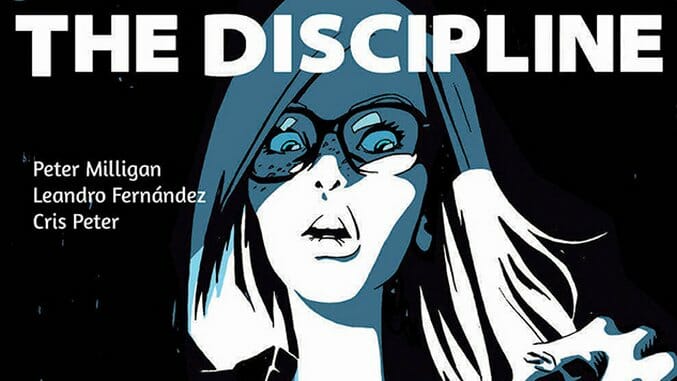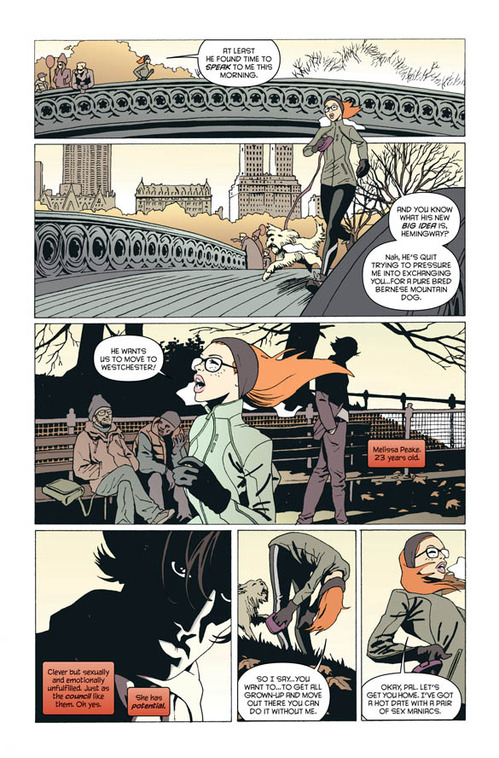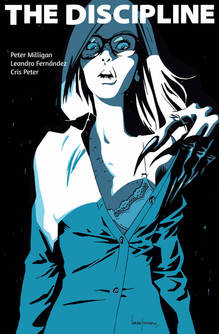Sex, Art & Danger: Peter Milligan on His New Image Comic, The Discipline

To call Peter Milligan’s body of work “vast” would be an understatement of the highest order. Milligan got his start writing comics for the British anthology 2000 AD, including the 1986 series Bad Company, to which he returned last year. Like many an acclaimed British comics writer, he’s worked extensively with DC’s Vertigo imprint, including a head-spinning run on Shade the Changing Man in the 1990s and a stint writing the final fifty issues of Hellblazer. Current title New Romancer analyzes chivalry and passion under a digital lens aimed squarely at millennial passivity. At Marvel, his work with artist Mike Allred on X-Force (later X-Statix) blended a trenchant examination of the superhero as celebrity with moments of unsettling surrealism.
And it’s the rare work of Milligan’s that doesn’t unsettle in some way. His new series The Discipline with artist Leandro Fernández follows a young woman named Melissa suffering from a bad marriage. That changes dramatically when she meets Orlando, a mysterious man who may not be all that he seems—or even human. The series opens with a heady blend of obsession, desire, ominous art and the familiar colliding with the alien. We spoke with Milligan to learn more about the book’s origins, his writing approach and the shifting comic book industry.![]()
Paste: Where did the concept for The Discipline come from? You’re dealing with shadowy organizations, bodily transformations and substances that seem to transport their taker’s mind into another realm—how much of the underlying mythology did you have to have planned out before you wrote the first few issues?
Peter Milligan: Shadowy organizations, bodily transformations, substances that transport the taker’s mind into another realm? Sounds like most of my youth! Seriously, a lot of the stuff in The Discipline is based on, or an exaggeration of, things I’ve been in contact with—or wish or imagined that I had. What seems like a pretty simple story of boredom and sexual awakening quickly grows into something much wider, much older and much weirder. And when you’re dealing with this kind of complex centuries-hopping mythology, you really have to have it worked out before your hero steps onto the stage. That’s not to say that things can’t change, that new ideas can’t crop up, but overall I could see the whole world of The Discipline, the Stalkers and where sex comes into it all.
Paste: Artwork plays a large role in the first issue of The Discipline: Melissa and Orlando meet in front of a Francisco Goya painting, and Renaissance art (and its variations) are a recurring motif. Were there other examples of fine art that worked their way into the script, or will down the line?
Milligan: Art continues to be important to this story for a few reasons. Art plays with the idea of what is real and what isn’t. And it’s a window onto the past, and into artists’ imaginations. And the past, and what might or might not be imaginary runs through this book.

The Discipline #1 Interior Art by Leandro Fernández
Paste: The Discipline isn’t your first foray into comics that blend horrific imagery with a real-world setting. How do you find the ideal balance between a grounded sense of place—in this case, New York City—and a book’s more fantastical, unsettling elements?
Milligan: I always find that stories that have a good grounding in the real world, something solid and believable, are more shocking or powerful or horrific. Getting the balance right is about instinct, I think. You just try to make your character’s world believable, so we see the contrast when it’s affected by the “other.” With The Discipline, the contrasts between the different worlds go even deeper. This story is about a woman who is already attempting to balance two very different—albeit very real—worlds. When the weirdness starts, this is yet another world that Melissa must attempt to deal with.
-

-

-

-

-

-

-

-

-

-

-

-

-

-

-

-

-

-

-

-

-

-

-

-

-

-

-

-

-

-

-

-

-

-

-

-

-

-

-

-











































